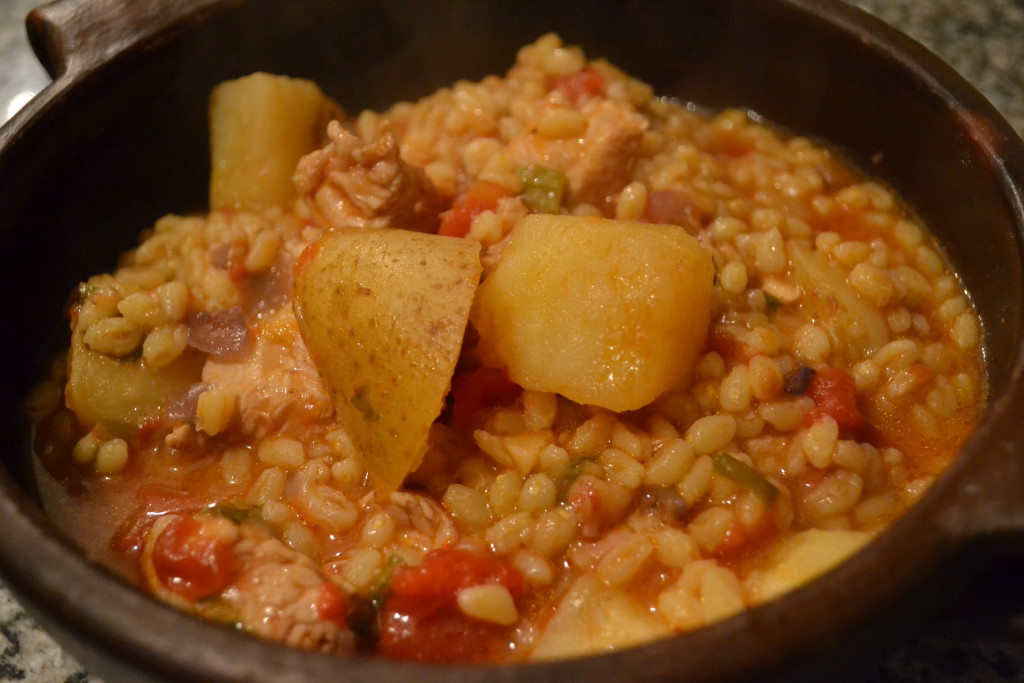On Sunday supplement
Food and Wine
The Turkish have their Bugday Çorbasi, the Saudis their Shorobat Il-Jereesh and the Jordanians their Shourbat Freekeh, and the Yemenis, Shorba Burr. From Cyprus, Tarhana; Algeria, Jary; Zanzibar, Shorba; India, Alisa, Poland, Zur, Armenia, Madzoon Abour, and Iran, or Persia, Aash-e Gandom. I could probably keep going, but by the time I was done, I’d have forgotten what I was writing about, and probably put all the celiacs into anaphylactic shock. Because what do these all have in common? They’re wheat based soups. What brought all this on? Monday.
Why Monday? It’s a day in the northwest of Peru, originally from the mountain region, though in modern day centered around the coastal city of Trujillo, when, week in and week out, local cooks prepare a dish called Shambar. It’s a pork and wheat soup, very thick, very hearty, and the reasons behind the Monday only tradition are pretty much lost to time. It’s generally assumed that, being the first day of the work week, it was a way of providing plenty of nutrition to start the week. But that assumes that back in antiquity, in the indigenous cultures, Sunday was somehow a day of rest, if there even was one, as it became after the arrival of the conquistadors. That’s unlikely, unless the day of rest just happened to coincide, and this tradition is reputed to go back well before the Spaniards arrived.
Here in Argentina (though shambar is available at virtually every Peruvian restaurant at Monday lunch), we have the Guiso de Trigo Candeal – no fancy names for us, just tell it like it is, “Durum Wheat Stew”. It’s not one of the more commonly seen one-pot meals, at least not here in Buenos Aires, but it’s a traditional and hearty winter dish from the mountain regions of the country, where it is, I’ve been assured, recommended to be consumed with “a group of brave friends”. I assume that since the only person telling me that is a porteño, that it’s because the stew contains a couple of hot chilies, which require sallying forth valiantly, spoon in hand.
Not surprisingly, as with, it seems most of the stews here, beef and bacon make an appearance. Far be it for me to eschew bacon, the “gateway meat”, and I generally leave it in the dish, it’s a small amount, but if you prefer, leave it out of the following recipe and just add a teaspoonful of liquid smoke, or use smoked salt in place of regular salt, to give that hint of wood smoke. For those of you who don’t cope well with spicy dishes, substitute a red or yellow bell pepper for the chilies.
Wheatberry Stew
250 grams of wheat berries (trigo pelado)
1 large potato, diced (250-300 grams)
100 grams smoked bacon (optional)
1 liter vegetable or chicken stock
2 hot chilies, chopped
3 garlic cloves, minced
3 green onions, chopped
1 red onion, chopped
1 tablespoon smoked paprika
60 ml whiskey
250-300 grams chicken breast, diced
10-12 sprigs of parsley, chopped, stems and all
4-5 sprigs of oregano, leaves stripped off the stems
240 grams canned, peeled plum tomatoes (1 can)
2 tablespoons olive oil
salt and pepper to taste
Wash the wheat grains well to remove any chaff, and then leave to soak in cold water for 20 minutes. Drain. In a good sized pot, saute the bacon (optional, as noted), onions, garlic, chilies, and paprika in the olive oil until the onions are soft. Add the chicken and cook until lightly browned on the surface. Add the whiskey and deglaze the pan to get up any stuck bits, let the liquid absorb. At this point add the remaining ingredients (wheat, potatoes, herbs, tomatoes, and stock), bring to a boil, reduce the heat to minimum and simmer, covered, until the wheat and potatoes are cooked through, approximately 30 minutes. Season to taste with salt and pepper.
Note: You can also make this dish with whole, unpeeled wheat grains, just soak them overnight and plan on the cooking time being more like 45 minutes; or, with bulgur wheat, which is a cracked type of wheat and takes less cooking time, 15-20 minutes.
A series of recipes and articles that I started writing for the Buenos Aires Herald Sunday supplement, Food & Wine section, at the beginning of 2012. My original proposal to them was to take local favorite dishes and classics and lighten them up for modern day sensibilities. We’re not talking spa or diet recipes, but at the very least, making them healthier in content, particularly salt, fat and portion size. As time went by, that morphed into a recipe column that, while emphasizing food that is relatively “good for you”, wasn’t necessarily focused on local cuisine. At the beginning of 2013 I decided to stop writing for them over some administrative issues, but it was fun while it lasted.
